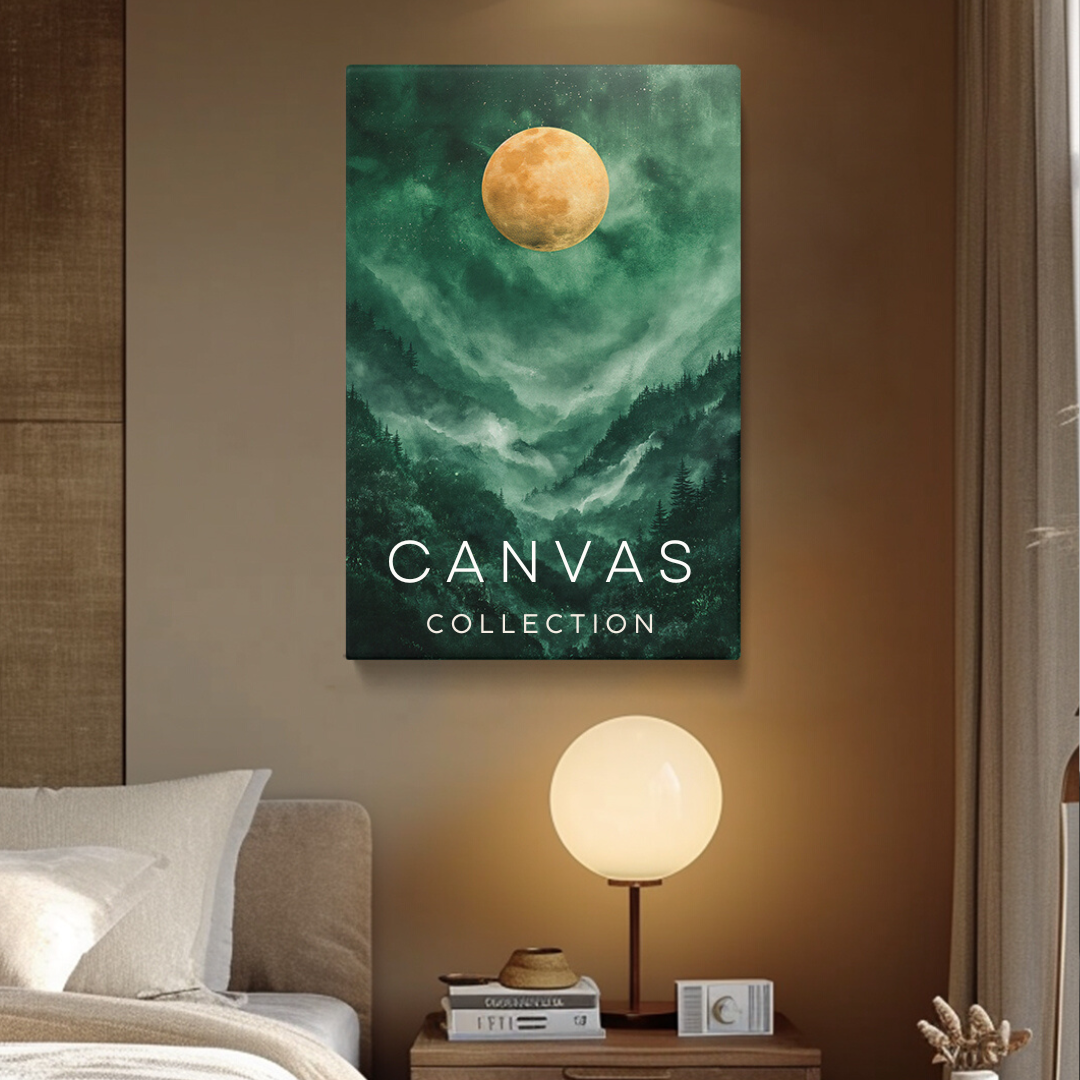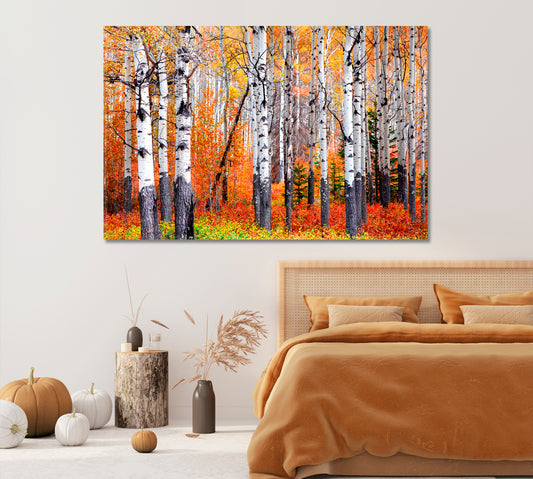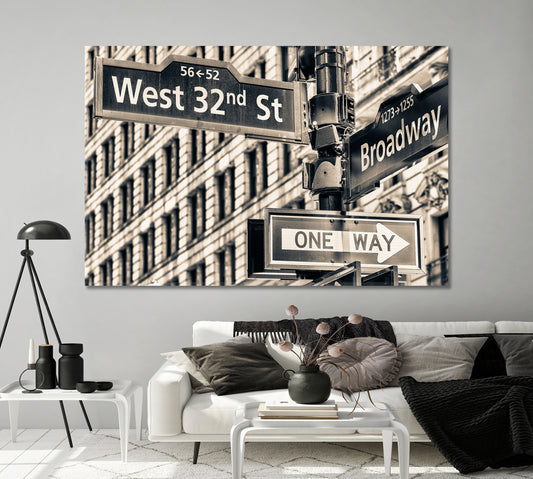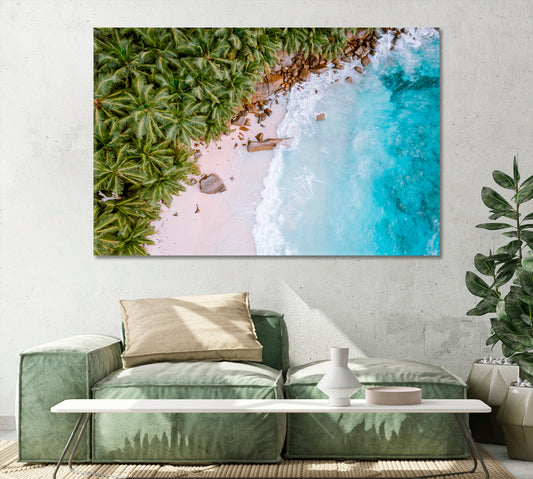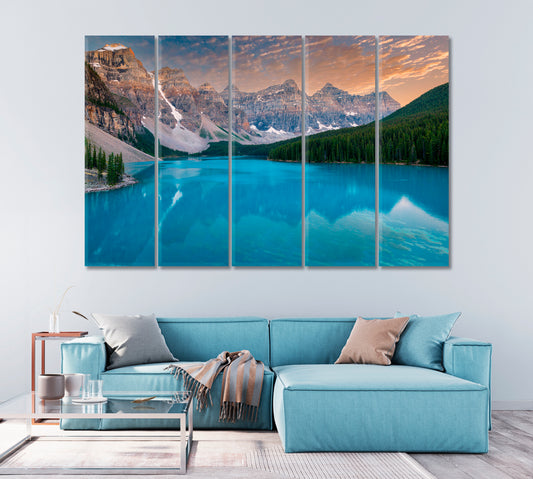
The Timeless Elegance of Black and White Wall Art: An Exploration of Monochromatic Mastery
Share
The Timeless Elegance of Black and White Wall Art: An Exploration of Monochromatic Mastery
I. Introduction
- Brief insight into the timeless appeal of black and white art.
- Setting the stage for understanding monochromatic mastery.
II. Historical Context
- The origins of black and white artistry in ancient civilizations.
- Transition from early grayscale photography to wall art.
III. The Psychology of Monochrome
- How the human brain perceives black and white.
- The emotional depth and reactions evoked by the absence of color.
IV. The Artistic Appeal
- The challenges and rewards of creating art within two shades.
- Techniques and textures exclusive to black and white artistry.
V. Notable Artists and Their Contributions
- Highlighting pioneers of monochromatic art.
- Exploring their techniques, impacts, and legacies.
VI. Black and White in Modern Décor
- How monochromatic pieces accentuate modern interiors.
- Tips for selecting the perfect black and white artwork for different spaces.
VII. The Cultural Significance
- Black and white art across various cultures and its symbolic meanings.
- The global resonance of monochromatic themes.
VIII. The Commercial Aspect
- The market for black and white wall art: trends, pricing, and collecting.
- Its place in galleries, exhibitions, and private collections.
IX. Future of Black and White Wall Art
- The blend of digital mediums with traditional monochromatic themes.
- Predictions on how the genre will evolve in the contemporary art scene.
X. Conclusion
- Summarizing the undying allure and significance of black and white wall art.
- Reflecting on its place in the ever-evolving world of artistry.
XI. Call to Action
- Encouraging readers to explore and invest in monochromatic art pieces.
- Invitation to share their favorite black and white artworks or personal experiences with such art.
The Allure of Absence: Diving into Black and White Artistry
In a world bursting with color, there remains an inexplicable allure to the simplicity and elegance of black and white. It's a palette that transcends eras, bringing with it a depth that vibrant hues can sometimes struggle to convey. From the grainy memories immortalized in old photographs to the striking contrasts found in contemporary art, the monochromatic duo has long held a special place in the artistic realm. This isn't merely about the absence of color—it's about the mastery of utilizing that absence to tell a story, evoke an emotion, or capture a moment. Join us as we embark on a journey through the timeless elegance of black and white art, delving into its profound impact and understanding the mastery behind every stroke and pixel.
II. Historical Context
The use of black and white in artistic expression is far from a modern invention. Ancient civilizations, from the prehistoric cave painters to the dynastic Egyptians, employed a limited color palette, often restricted by the materials available to them. Their artworks, created with charcoal or chalk, depicted intricate tales of gods, warriors, and everyday life, proving that the absence of color never limited their narrative capabilities.
As we fast-forward to the age of photography, the grayscale realm took on a new dimension. Early photographs, primarily due to technological constraints, were captured in black and white. But this limitation birthed an aesthetic of its own—one that offered a different perspective on reality, full of depth, emotion, and raw beauty. This monochromatic world immortalized moments in time, from historic events to intimate family gatherings, all framed in a dance of shadows and light.
Over time, what began as a constraint evolved into a choice. Artists and photographers saw the potential in this muted palette, experimenting with it even when color became readily available. The appeal of black and white transcended photographs and began influencing other art forms, including wall art. The contrasts, gradients, and tonal nuances of black and white wall art offered a modern take on this age-old tradition, adding elegance and gravitas to contemporary spaces.
III. The Psychology of Monochrome

Delving into the Depth of Black and White: The Brain's Perception and Emotional Resonance
In the world of art, where colors often take center stage, black and white artworks stand out with a timeless elegance. The absence of color in monochromatic pieces, rather than being a limitation, amplifies their power. But what makes black and white so captivating? The answers lie deep within our brain's intricate wiring and our innate emotional responses.
-
Brain Perception of Black and White: Our brain processes black and white differently from colored images. Without the distraction of multiple colors, our brain hones in on contrasts, shapes, and textures in the artwork. The stark difference between black and white sharpens our focus on the finer details, allowing us to appreciate the intricacies of light and shadow, line and form. This heightened attention to detail often leads to a deeper understanding and appreciation of the subject matter, whether it's a landscape, a portrait, or an abstract piece.
-
Evoking Nostalgia and Timelessness: There's an inherent sense of nostalgia attached to black and white imagery. It takes us back to a bygone era of classic films, old photographs, and historical moments. This timelessness, coupled with the brain's focus on patterns and contrasts, results in a unique blend of past recollections with present observations, creating a multi-layered experience for the viewer.
-
Emotional Resonance of Absence of Color: Colors often come with associated emotions; blue can evoke calmness, red might suggest passion, and green can bring about feelings of tranquility. In the absence of these color-coded emotional cues, black and white artworks leave more to the imagination. The viewer is invited to dive deeper, deriving emotions from the subject matter, composition, and their personal experiences and memories. This often leads to a wide range of emotional reactions, from melancholy and introspection to hope and elation.
-
Universal Appeal and Interpretation: Without the guiding force of color, black and white art offers a universal canvas. It transcends cultural and personal color associations, allowing for a broader spectrum of interpretations. This universality makes monochromatic pieces deeply personal and yet universally relatable, resonating with a diverse audience.
In conclusion, the psychology behind our attraction to black and white art is multifaceted, rooted in both the brain's perception mechanics and the profound emotional connections such artworks evoke. Far from being simplistic, monochromatic artistry invites viewers into a dance of contrasts, evoking deep emotional responses and offering an exploration into the very essence of art and human perception.
IV. The Artistic Appeal
The decision to work in black and white is far from a mere stylistic choice—it's an artist's commitment to a form that demands meticulous attention to detail and a profound understanding of shades. Within the strict confines of black and white, artists find both their greatest challenges and their most rewarding triumphs.
-
Challenges in Monochromatic Creation: Working within the spectrum of black and white is an exercise in restraint and precision. Artists forego the expressive power of color palette, relying solely on value—lightness or darkness of a shade—to convey their message. This constraint demands a focus on composition, lighting, and subject matter that is both rigorous and exhaustive. Every line must be deliberate, every contrast intentional, as the dichotomy of black and white leaves little room for error without the forgiving camouflage of color.
-
Rewards of a Dichromatic Discipline: Yet, within this discipline lies freedom. Freed from the complexities of color theory, artists can explore form, texture, and contrast with a heightened clarity. Black and white art often has a striking, undeniable presence. It commands attention, boldly standing out with its distilled purity. This purity can lead to powerful symbolism and a more direct emotional impact, as viewers are often drawn into the essence of the image without the potential distractions of color.
-
Textures and Techniques Exclusive to Black and White: The absence of color shifts the focus to the physicality of the medium itself. Textures become a pivotal element in monochromatic art. Techniques like cross-hatching, stippling, and the use of negative space gain a new level of importance. They are employed not just for embellishment but as primary tools for differentiation and depth. Charcoal, with its velvety blacks, and graphite, with its reflective sheen, become not just mediums but integral parts of the overall experience of the artwork. In photography, the interplay of light and shadow, the granularity of film grain, and the starkness of silhouette all take on added significance.
-
Monochrome in Modern Art: In contemporary art, black and white are often used to make statements that are both universal and timeless. The simplicity of the palette can give a voice to complex themes, stripping away the superfluous and focusing the viewer's gaze on the intended message. Whether through painting, drawing, or photography, modern monochromatic works continue to intrigue, challenge, and delight audiences with their nuanced simplicity and complex depth.
The art of black and white thus becomes a dance between the dualities of absence and presence, restriction and freedom, complexity and simplicity. It is a testament to the artists' ability to create profound beauty and deep meaning from the simplest of palettes, compelling viewers to see the world not in color, but in shades of truth.
V. Notable Artists and Their Contributions
The realm of black and white art boasts a pantheon of pioneers who have pushed the boundaries of this medium, leaving behind legacies that continue to influence contemporary art. Here we delve into the luminaries of monochrome and the indelible marks they've etched into the fabric of art history.
-
Pioneers of Monochromatic Art:
- Rembrandt van Rijn: Although known for his oil paintings, Rembrandt's mastery in the use of chiaroscuro in his etchings showcased his early understanding of the dramatic potential of black and white.
- Pablo Picasso: With his minimalistic ink drawings, Picasso demonstrated how a single line could convey as much as an entire color spectrum.
- Ansel Adams: His photographs not only documented the American West but also set a precedent for how black and white could be used to evoke emotion and advocate for environmental conservation.
- Kazimir Malevich: A pioneer of geometric abstract art, Malevich's ‘Black Square’ is one of the most iconic monochromatic works, representing the zero point of painting.
-
Exploring Their Techniques:
- Hatching and Cross-Hatching: Rembrandt’s etchings are quintessential examples of how these techniques can create depth and dimension without color.
- Geometric Abstraction: Malevich’s work reminds us how simple black shapes against a white background can produce complex visual effects and convey profound philosophical concepts.
- Zone System: Ansel Adams developed this technique to determine optimal film exposure and development, maximizing the tonal range in black and white photographs.
-
Impacts on Modern Art:
- These artists' explorations into black and white have broadened the conceptual understanding of contrast and composition. They have proved that emotion and narrative can be conveyed powerfully in monochrome, paving the way for later artists to experiment boldly with absence and presence.
- Monochromatic art continues to influence minimalism, abstract expressionism, and various other modern art movements.
-
Their Enduring Legacies:
- The techniques and philosophies pioneered by these artists remain foundational in art education and practice. Their contributions are not merely historical footnotes but active dialogues that continue in the corridors of contemporary art galleries and studios.
- From fine art photography to printmaking and beyond, the contributions of these artists have set aesthetic and philosophical benchmarks that challenge and inspire new generations.
In conclusion, these masters of monochromatic art have not only carved their names into the annals of art history but also handed down a challenge to future artists: to find within the seeming limitations of black and white a canvas of infinite possibilities. Their contributions continue to resonate, reminding us that sometimes, the absence of color can speak volumes.
VI. Black and White in Modern Décor
In the symphony of home styling, black and white artwork plays a timeless melody that complements the modern décor narrative. This section explores the integration of monochromatic pieces into contemporary spaces, offering guidance on selection and placement to elevate the aesthetic of any room.
-
Accentuating Modern Interiors:
- Contrast and Balance: Black and white pieces serve as visual anchors that bring balance to a room, contrasting beautifully against colorful backdrops or enhancing a minimalist palette.
- Versatility: Their adaptability makes them suited for various interior styles, from Scandinavian simplicity to industrial chic.
- Focal Points: Large-scale monochromatic art can become the centerpiece of a room, drawing the eye and unifying other design elements.
-
Selection Tips for Black and White Artwork:
- Identify the Room’s Character: Understand the atmosphere you wish to create—whether it's serenity for a bedroom or dynamism for a living space.
- Scale and Proportion: Consider the size of the wall and room when selecting artwork. Large prints can open up a space, while smaller pieces can add intrigue to nooks or smaller walls.
- Theme Consistency: Keep in mind the overarching theme of your décor. Abstract monochrome art can complement modern and minimalist interiors, while landscapes in black and white suit almost any setting.
- Mix and Match: Pairing black and white photography with abstract pieces can create a sophisticated gallery wall effect.
-
Enhancing Different Spaces:
- Living Rooms: A statement black and white painting can serve as a conversation starter and a unifying element for living room furnishings.
- Bedrooms: Soften the impact with monochromatic art featuring gentle lines or nature-based subjects to instill a sense of calm.
- Offices: Use geometric or abstract monochrome art to inspire creativity and concentration in a workspace.
- Dining Areas: Photographic prints or classic paintings in black and white can add a touch of elegance to dining spaces.
-
The Power of Framing:
- Frame Choice: The right frame can enhance the artwork and complement your interior design. A sleek black frame can give a modern edge, while a white frame can offer a softer touch.
- Matting: Matting can be used to draw the eye into the artwork and should be selected in accordance with the piece's style and the room's décor.
-
Integration with Lighting:
- Spotlighting: Use directional lighting to highlight the artwork and create dramatic shadows that enhance the monochromatic effect.
- Ambient Lighting: Soft ambient lighting can bring out the subtleties in textures and gradients within black and white pieces.
Explore Monochromatic Marvels:
- Journey through the elegant simplicity of black and white by visiting CETArt's Canvas Prints. Here, every stroke and shade embodies a story waiting to be told. Allow these canvases to become a part of your narrative.
Elevate Your Space with Timeless Art:
- Envision a realm where absence of color speaks volumes. Select a piece that captures your imagination and complements your space. With just a few clicks, bring a part of history into your home or office.
Join a Community of Art Enthusiasts:
- We invite you to join an ever-growing community that appreciates the profound beauty found in the contrast of black and white. Acquire a canvas from CET Art and be part of a unique art movement.
Share Your Monochromatic Journey:
- What tales do your walls tell with black and white art? Make a purchase, then share how these timeless pieces inspire you. Your stories inspire us and others, weaving together a tapestry of personal connections to art that transcends color.
Transform your environment with art that stands out in its understated beauty. Each canvas from CETArt is not just a decor item—it's a conversation starter, a statement of elegance, and a personal muse.
By inviting a black and white canvas print into your life, you're not just decorating a space; you're embracing a legacy of artistic expression that will continue to inspire and captivate. Don’t just decorate—curate with CETArt.
In sum, black and white wall art is more than just a visual pleasure; it's a design strategy that can alter perceptions, evoke emotions, and complement the design narrative of a space. Whether through a strikingly minimalist abstract piece or a detailed photographic print, these artworks serve as versatile tools in the hands of an interior designer, capable of transforming a room from ordinary to extraordinary.
VII. The Cultural Significance
Black and white art transcends the visual realm to touch upon the rich tapestry of cultural significance and symbolic interpretation found across the world. This section delves into the various meanings ascribed to monochromatic themes in different cultures and the universal resonance of these powerful hues.
-
Symbolic Meanings Across Cultures:
- Duality and Harmony: In many Eastern philosophies, black and white represent the duality of yin and yang, symbolizing balance and harmony in the universe.
- Simplicity and Sophistication: Various cultures see black and white as colors that represent simplicity, yet they also epitomize sophistication and elegance.
- Historical Significance: Some cultures associate black and white with historical events, traditions, or ancestral stories, often depicted in art as a means of preserving heritage.
-
Black and White in Religious and Mythological Art:
- Iconography: In religious art, these colors often symbolize opposing forces—good and evil, life and death—encouraging contemplation and introspection.
- Spirituality: Monochrome palettes are used in various religious contexts to evoke a spiritual atmosphere, stripping away the distractions of color to focus on the subject's essence.
-
Monochromatic Themes in Global Art Movements:
- Universal Resonance: Despite cultural differences, monochromatic themes often speak to universal human experiences, connecting audiences around the globe.
- Global Movements: Black and white have featured prominently in international art movements such as Minimalism, where they have been used to emphasize form and structure over color.
-
Contemporary Cultural Commentary:
- Social and Political Commentary: Artists often employ black and white in their works to comment on contemporary social and political issues, using the starkness of the palette to draw attention to the gravity of the subjects.
- Reflection of Modern Society: The simplicity of black and white can also reflect the complexities of modern life, stripping back the chaos to present a clearer, more impactful message.
-
Preservation and Revival of Traditional Techniques:
- Traditional Crafts: Black and white art helps in the preservation of traditional crafts, such as ink wash painting, calligraphy, and etching.
- Modern Adaptations: Contemporary artists frequently draw on these traditions, reinventing them in a modern context while paying homage to their cultural origins.
-
Educational Value and Accessibility:
- Teaching Tool: Black and white visuals are often used as educational tools, aiding in the teaching of art history and cultural studies.
- Accessible Art: The absence of color reduces costs for reproductions and printing, making cultural artworks more accessible to a wider audience.
-
Cross-Cultural Exchange:
- Exhibitions and Collaborations: International exhibitions featuring black and white art encourage cross-cultural dialogue and understanding.
- Influence and Inspiration: Artists across the globe draw inspiration from the monochromatic works of other cultures, creating a fertile ground for artistic exchange and innovation.
Through its stark contrast and depth, black and white wall art invites viewers to explore a visual language that speaks of the complexities of human culture. It bridges historical periods and geographical boundaries, offering a silent yet potent commentary on the shared human condition. Whether through its ability to convey profound cultural narratives or through its universal aesthetic appeal, black and white art remains a crucial component in the global art landscape, continually evolving and echoing the diverse voices of humanity.
VIII. The Commercial Aspect
The allure of black and white wall art is not only aesthetic but also has significant commercial implications. In this section, we examine the commercial vitality of monochromatic art, understanding its place in the art market and how collectors, galleries, and artists navigate the nuanced ecosystem of this timeless style.
-
Market Trends:
- Investment and Value: Analysis of market trends shows how black and white art is viewed as both a contemporary choice and a long-term investment by collectors.
- Popular Themes: Exploration of themes and subjects within black and white art that are currently in demand.
-
Pricing Dynamics:
- Factors Affecting Price: Discussion of the elements that impact the pricing of black and white artwork, such as artist reputation, rarity, and historical significance.
- Affordability Spectrum: How black and white art is accessible to a range of buyers, from affordable prints to high-end original pieces.
-
Collecting Monochromatic Art:
- Starting a Collection: Guidance for new collectors on how to begin acquiring black and white pieces, with tips on evaluating quality and authenticity.
- Diversifying Portfolios: For seasoned collectors, monochromatic art can diversify a collection, offering visual relief and contrast.
-
Galleries and Exhibitions:
- Curatorial Considerations: Insight into how galleries and curators approach black and white exhibitions, often using the color limitation to curate cohesive and striking shows.
- Exhibition Design: The unique challenges and creative strategies involved in displaying monochrome art to enhance its visual impact.
-
The Role of Auction Houses:
- Auction Records: Discuss notable sales and auction records for black and white art, highlighting its significance in the art auction world.
- Secondary Market: Examination of the resale market for black and white art and what drives its resale value.
-
Online Marketplaces and Digital Platforms:
- E-Commerce Growth: The rise of online art sales and how digital platforms are making black and white art more accessible and widespread.
- Print-on-Demand Services: Impact of print-on-demand services on the market and how they offer a flexible option for consumers.
-
Private Collections and Public Spaces:
- Corporate Collections: The role of black and white art in corporate art collections, often used to convey brand values or enhance the work environment.
- Public Installations: The appeal and considerations of black and white art in public installations and its ability to engage with a wide audience.
-
Artist Perspectives:
- Market Navigation: Artists’ strategies for marketing their black and white pieces, from social media promotion to gallery representation.
- Price Setting: How artists determine the value of their monochromatic artwork and the economics of producing such pieces.
-
Future Outlook:
- Predictions: Expert predictions for the future of the black and white art market, considering economic indicators and shifting consumer tastes.
- Sustainability: Consideration of the long-term sustainability of the market for black and white art, including factors that could influence its evolution.
The commercial aspects of black and white wall art are as dynamic and layered as the art itself. From individual collectors to large-scale auctions, the enthusiasm for these pieces showcases a robust market, underscored by the art's adaptability and enduring appeal. Understanding these commercial dynamics offers insight into the significance of black and white art within the wider art economy and its potential for continued relevance and growth.
IX. Future of Black and White Wall Art
In the art world, black and white wall art holds a special place that intertwines with economic trends, collectors' preferences, and the curatorial choices of galleries. This section delves into the nuances of the market, exploring how this seemingly simple color palette has made a complex and enduring impact commercially.
-
Market Trends:
- Analyze current trends influencing the demand for black and white art, identifying patterns and preferences in buyer behavior.
- Examine the role of art fairs, online platforms, and social media in shaping the market visibility and popularity of black and white wall art.
-
Pricing:
- Discuss factors that influence the pricing of black and white artwork, from artist notoriety and rarity to the medium and size of the work.
- Provide insights into the entry-level pricing for emerging artists versus the premium commanded by renowned artists in the black and white space.
-
Collecting Insights:
- Offer advice for aspiring collectors on how to approach building a collection of black and white art, considering budget, space, and personal taste.
- Explore the role of black and white artwork in seasoned collectors' portfolios and its impact on the overall aesthetics and value of their collections.
-
Galleries and Exhibitions:
- Uncover how galleries select and present black and white art, detailing the thought process behind solo and group exhibitions that focus on monochromatic themes.
- Reflect on the reception of black and white wall art in various settings, from local galleries to international art shows.
-
Private Collections:
- Share stories of private collectors who focus on black and white wall art and the significance these pieces hold in their personal collections.
- Delve into how black and white pieces can serve as focal points or complementary elements in private spaces.
-
Art as Investment:
- Explore the investment aspect of black and white wall art, discussing historical appreciation rates and the artwork's potential as a financial asset.
- Highlight case studies where black and white art has significantly increased in value over time.
-
The Role of Art Advisors:
- Discuss the importance of art advisors in the acquisition process for high-value black and white artwork, particularly for investment-focused collectors.
- Examine the strategies art advisors use to assess and recommend black and white pieces to their clients.
-
Digital Marketplace:
- Address the impact of online art sales and digital galleries on the accessibility and distribution of black and white wall art.
- Consider how emerging artists utilize online platforms to gain recognition and sell their black and white creations.
-
Future Predictions:
- Offer informed predictions on the future of black and white wall art within the commercial market, considering the influence of global economic conditions and changing art trends.
- Speculate on the next evolutionary steps for black and white art as digital and mixed-media artforms continue to grow.
By examining the commercial aspect, we gain a clearer understanding of how black and white wall art is not just a stylistic preference but also a significant segment of the art market. This monochromatic art form continues to captivate collectors and investors, solidifying its position in the realm of galleries, exhibitions, and private collections worldwide.
X. Conclusion
As our exploration of black and white wall art concludes, we find ourselves returning full circle to the undiminished allure that first drew us to these shades. This final section synthesizes our discoveries and encapsulates the essence of monochromatic mastery.
-
Enduring Allure:
- Reaffirm the enduring appeal of black and white wall art, highlighting its ability to transcend time, trends, and cultures.
- Reflect on the emotional resonance and aesthetic purity that make monochrome art an enduring choice for artists and enthusiasts alike.
-
Significance in Artistry:
- Summarize the unique challenges and artistic rewards that come with the monochromatic approach, affirming its significant role in the broader art world.
- Emphasize the versatility of black and white art, from its psychological impact to its adaptability within various decor styles.
-
Cultural and Commercial Impact:
- Revisit the cultural significance of black and white art across different societies, underscoring the shared human connection to these fundamental colors.
- Recap the commercial aspect, acknowledging how black and white wall art continues to captivate the market and hold value for collectors.
-
Future Perspectives:
- Look ahead to the future, considering how the principles of black and white art will continue to influence emerging art forms and digital advancements.
- Speculate on how contemporary artists will continue to innovate within the monochromatic palette, pushing boundaries and exploring new textures and techniques.
-
Closing Reflection:
- Provide a final reflection on the timeless elegance of black and white wall art, inviting readers to continue discovering its beauty and depth in galleries, homes, and beyond.
- Encourage ongoing appreciation and dialogue around monochromatic art, suggesting that the conversation around these two colors is as infinite as the spectrum they eschew.
In the dance of light and shadow, black and white wall art captures moments of stark reality as well as the most complex human emotions. As we close this chapter on monochromatic mastery, it's evident that the simplicity of black and white will continue to inspire and provoke, maintaining its vital place in the world of art for generations to come.
As we turn the last page on our journey through the stark beauty and profound complexity of black and white wall art, we extend an invitation to not just observe, but to participate in the monochromatic tradition:
Discover Your Monochrome Masterpiece:
- Begin your own journey into the world of contrast and contour by exploring an exquisite collection of black and white wall art at CET Art. From the minimalist to the intricate, find a piece that speaks to you and your space.
Curate Your Personal Gallery:
- Dive into the curated selection where each piece tells its own story in shades of grey. Let these artworks transform your home or office into a gallery of timeless elegance.
Join the Community of Monochrome Aficionados:
- Share your passion with a community that appreciates the powerful statement of black and white art. Follow the link, select the piece that resonates with you, and tell us why it captured your eye.
Engage in the Conversation:
- We encourage you to share your experiences with black and white wall art. Which pieces from the CET Art collection evoke the strongest emotions? How do they transform the spaces they inhabit? Your stories inspire us and others to appreciate the depth of monochrome.
Remember, black and white wall art is not just a choice—it's an expression. It's an opportunity to connect with art on a primal level, where the absence of color speaks volumes. Embrace the simplicity, feel the emotion, and let the contrasts of life find harmony on your walls.
Whether you're a seasoned collector or a newcomer to the art scene, there's something undeniably compelling about the dichotomy of black and white. It's more than decor; it's a dialogue with history, emotion, and beauty. Don't just listen—join the conversation.
